Harpoon Heads, Foreshaft, And Foreshaft Socket Item Number: E7422-0 from the National Museum of Natural History


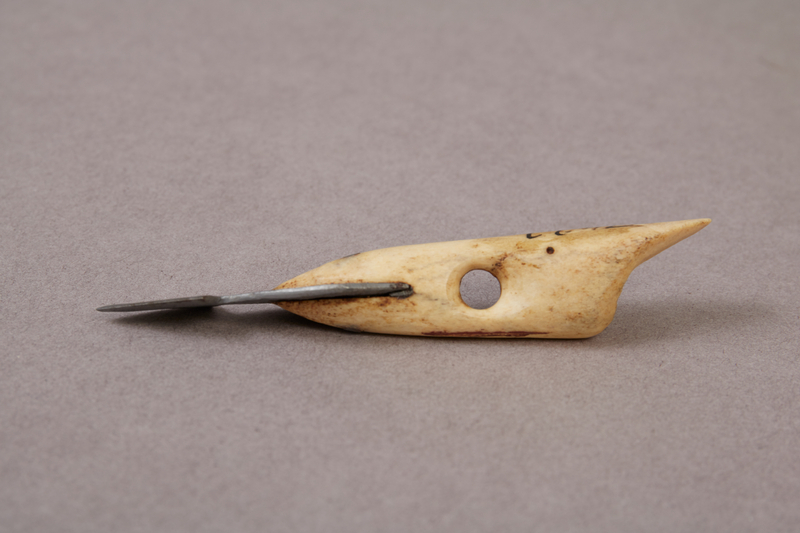
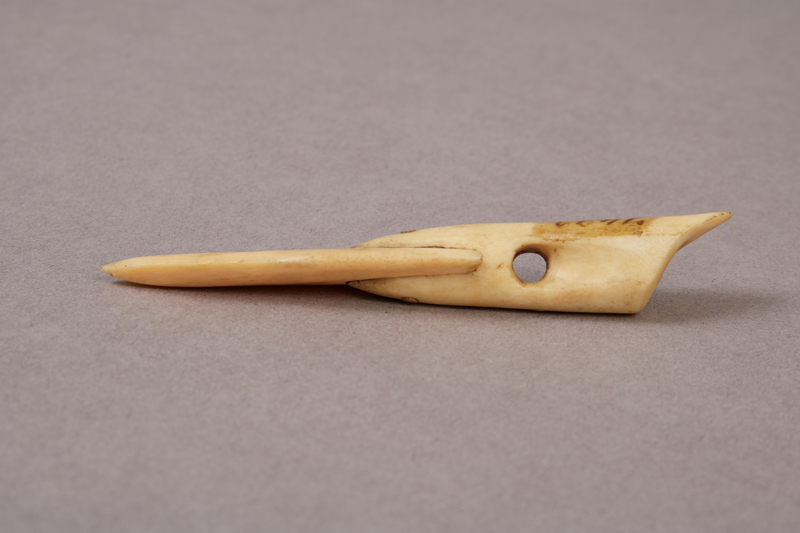
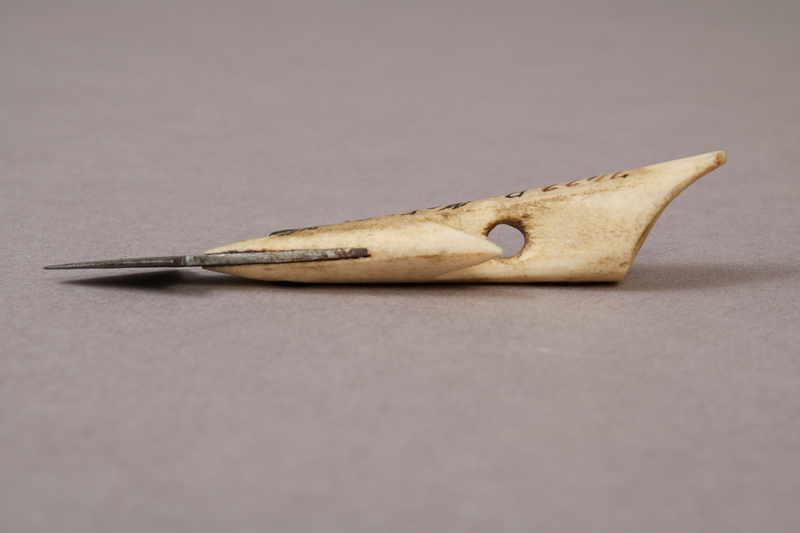
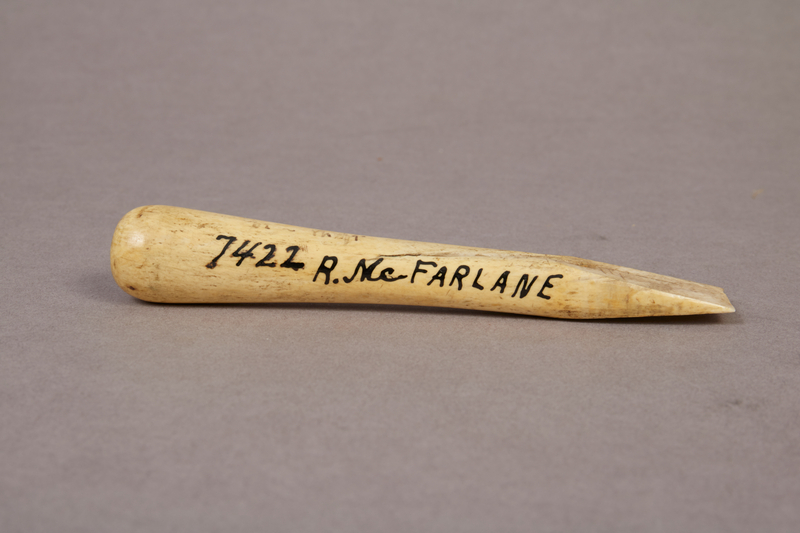
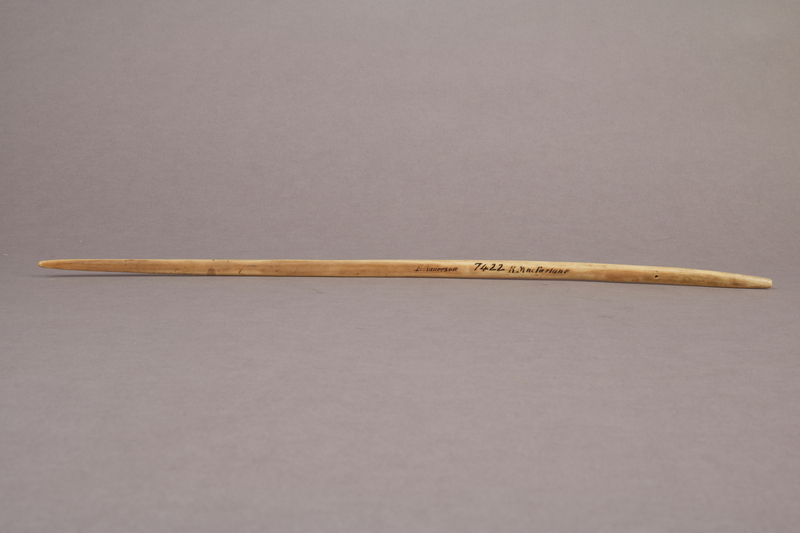
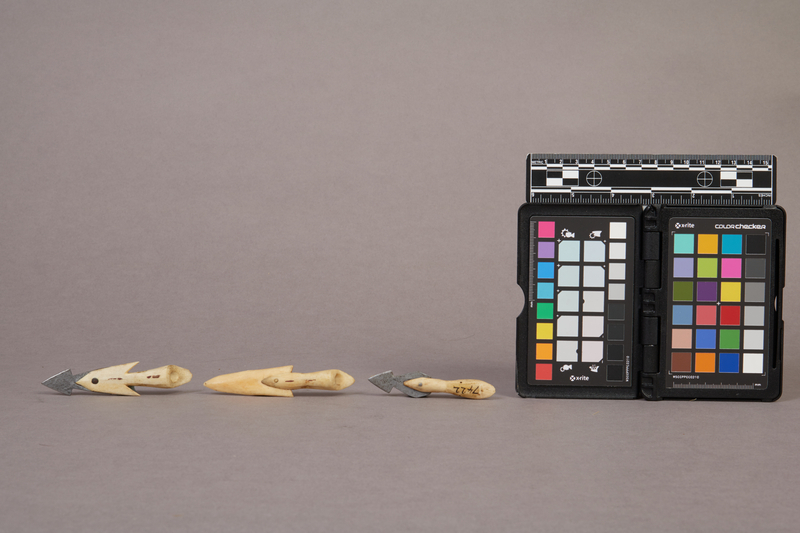
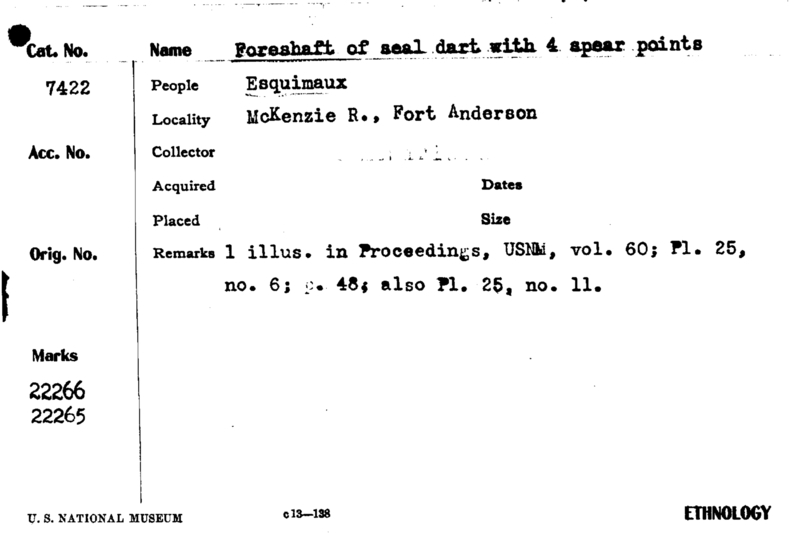
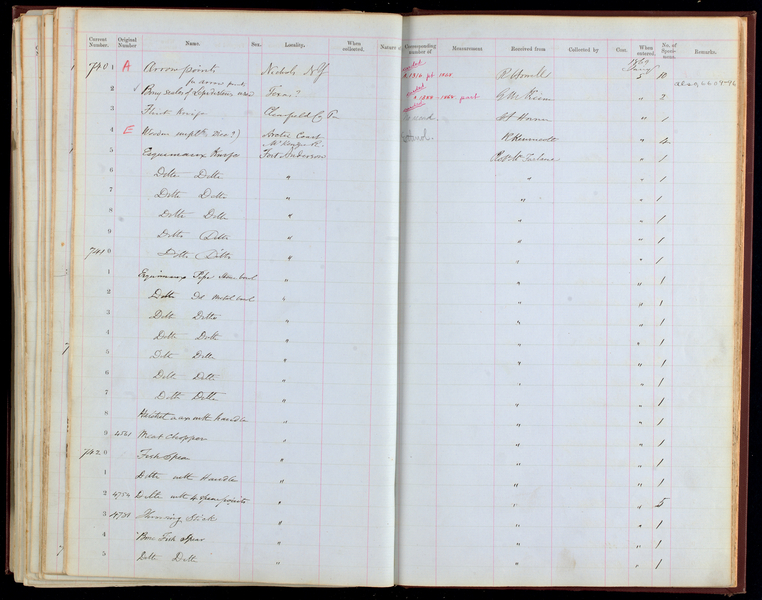

Notes
FROM CARD: "FORESHAFT OF SEAL DART WITH 4 SPEAR POINTS. 1 ILLUS. IN PROCEEDINGS, USNM, VOL. 60; PL. 25, NO. 6; P. 48; ALSO PL. 25, NO. 11."Source of the information below: Inuvialuit Pitqusiit Inuuniarutait: Inuvialuit Living History, The MacFarlane Collection website, by the Inuvialuit Cultural Resource Centre (ICRC), Inuvik, N.W.T., Canada (website credits here http://www.inuvialuitlivinghistory.ca/posts/12 ), entry on this artifact http://www.inuvialuitlivinghistory.ca/items/41 , retrieved 1-27-2020: [Three] harpoon heads, a foreshaft and a foreshaft socket. The harpoon heads are made of antler. One has a bone or ivory blade inserted into a slot at one end and secured with a bone rivet. The other two have barbed iron blades held in slots by iron rivets. The body of one of the harpoon heads has a sharp barb on each side. Each has a line hole running though the body in the same plane as the blade, and a single spur. The foreshaft is a long, slender and slightly curved rod made of ivory. One end is slightly square and fits snugly into the socket piece. The other end tapers to a rounded point and fits into sockets at the bases of each of the harpoon heads. The socket piece is made of ivory. It has a wedge-shaped base that would have been inserted into a shaft made of wood and secured with lashing of some type. The other end has a drilled hole for receiving one end of the foreshaft. More information here: http://www.inuvialuitlivinghistory.ca/item_types/30: Harpoons are used for hunting sea mammals such as seals and whales. They have a point, or 'head', that separates from the rest of the harpoon and remains attached to the quarry. A line running from the harpoon head is held by the hunter or attached to a float, allowing the animal or fish to be retrieved. Thrusting harpoons, used for hunting seals at breathing holes on the sea ice, generally have long foreshafts that swivel inside a socket piece attached to the harpoon shaft in order to release the harpoon head. Throwing harpoons used for hunting seals and whales in open water normally have foreshafts that are more securely fixed to the harpoon shaft. Both types are found in the MacFarlane Collection.
Item History
- Made in Northwest Territories, Canada
- Collected in Northwest Territories, Canada
- Received from Roderick R. MacFarlane on January 7, 1869
What
- Name
- Harpoon Heads, Foreshaft, And Foreshaft Socket
- Identification Number
- E7422-0
- Type of Item
- harpoon
Who
- Culture
- Eskimo, Inuit and Inuvialuk
- Received from
- Roderick R. MacFarlane
Where
- Holding Institution
- National Museum of Natural History
- Made in
- Northwest Territories, Canada
- Collected in
- Northwest Territories, Canada
When
- Acquisition Date
- on January 7, 1869
Other
- Accession Number
- 69A00012